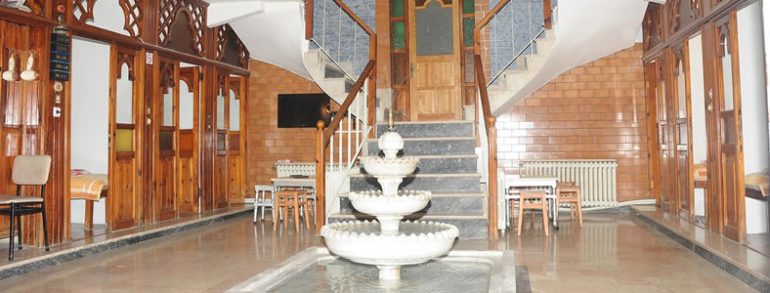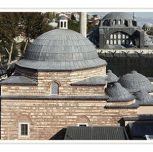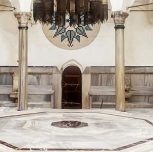The Cinili Hamam is the most eminent hamam located on Itfaiye Street in Istanbul's Fatih district. It was built by Mimar Sinan during the second quarter of the 16th century to generate revenue for the Hayrettin Paşa Madrasah and its tomb. The Hamam is also called “The Zeyrek Çinili Hamam” and “The Hayrettin Paşa Hamam.” It took its present name from the İznik tiles covering its walls which have not made it to the present day. After two large fires in 1782 and 1833, it was repaired and transfered to an individual owner.
The camekan of the double-bath styled Cinili Bath is not in contradiction with Classical Ottoman architecture; it is covered by a large dome. There is a pool with a fountain in the middle of the camekan, which is thought to have been a gift by the Shar of Iran. A court surrounded by small individual changing rooms and covered by a dome has been established in the middle of the hamam. The changing rooms of the hamam are located upstairs and they passfrom the camekan into the ılıklık (lukewarm section) which is covered by an arched roof. Later, four keseliks, a type of bathing cabin used for exfoliating the skin, have been added to the ılıklık. From the ılıklık, one continues to the harare (hot section) through a passageway. While walking through the passageway, a bathroom covered by five domes draws the attention of visitors.There are four halvets (a very hot bathing cubicle within the bath), three sofas (halls), and a marble plinth (göbek taşı). There are also two verses, each written in Persian, on the doors of halvet.
Kese = coarse bath-glove for washing the body. Wash Cloth










